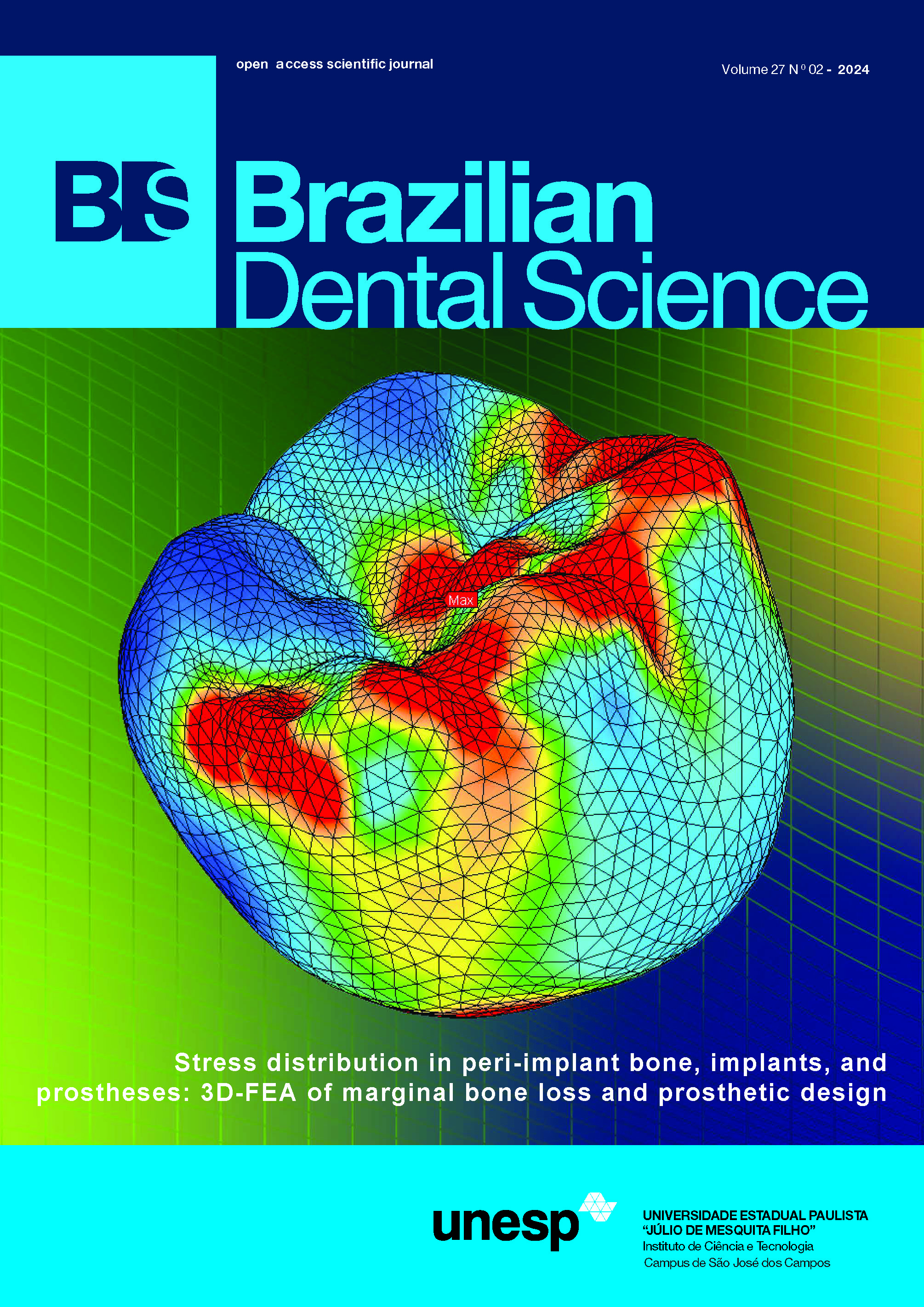The effect of ZnO nanoparticles addition to PMMA on surface contact angle and adhesion of Candida albicans
DOI:
https://doi.org/10.4322/bds.2024.e4201Abstract
Background: Heat polymerized polymethyl methacrylate resin (PMMA) is a porous denture material prone to microbial attachment due to water absorption. Candida albicans (C. albicans) in PMMA can cause denture stomatitis. Zinc Oxide Nanoparticles (ZnO NPs) possess antimicrobial properties. Objectives: This study aimed to investigate the effect of adding various concentrations of ZnO NPs to PMMA on surface contact angle and C. albicans adhesion. Material and Methods: The PMMA samples (10x10x2mm) were prepared with ZnO NPs concentrations of 0%, 2.5%, 5%, and 7.5% (n=4). The samples were soaked in distilled water 48 hours at 37°C. The contact angle test was performed using drop-profile analysis. C. albicans adhesion test was evaluated through the 3-(4,5-dimethyl-2-thiazolyl)-2,5-diphenyl-2H-tetrazolium bromide (MTT assay) for cell viability. The distribution profile of Zn element was observed using SEM-EDX. The release of Zn2+ was tested by analyzing the aqueous solution after sample immersion AAS. Results: The mean contact angles (°): 82.96±4.20; 82.36±0.66; 86.25±4.49; and 92.82±5.40. Results of post-hoc LSD showing differences only in the 7.5% ZnO NPs group. The mean viability C. albicans (%): 2.27±0.80; 1.55±0.50; 1.45±0.33; and 1.43±0.12. There was a tendency of decreasing means with increasing concentrations. However, this trend was not consistent with one-way ANOVA, which indicated no significant differences among the treatment groups. SEM-EDX demonstrated ZnO NPs distribution within PMMA’s matrix. AAS results revealed no Zn2+ presence in distilled water. Conclusion: In conclusion, the addition of ZnO NPs to PMMA results in an increased contact angle, while exhibiting a statistically non-significant reduction in C. albicans adhesion.
KEYWORDS
C.albicans; Contact angle; Nanoparticles; PMMA; ZnO.
Downloads
Published
How to Cite
Issue
Section
License
Brazilian Dental Science uses the Creative Commons (CC-BY 4.0) license, thus preserving the integrity of articles in an open access environment. The journal allows the author to retain publishing rights without restrictions.
=================




























